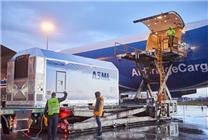The Surge of Low-Altitude Equipment in China: Industry Insights
As of August 30, recent reports highlight a significant growth in China’s low-altitude equipment sector, with the current number of products exceeding an impressive 4 million. This sector is evolving rapidly, characterized by advancements in unmanned, electrified, and intelligent technologies.
Rapid Expansion in Low-Altitude Equipment
At a recent low-altitude industrial innovation and development conference in Shihezi, Xinjiang, officials from the Ministry of Industry and Information Technology shared some groundbreaking statistics. Currently, there are 881 registered companies in China, contributing to a diverse range of 2,822 products in the low-altitude equipment arena. Notably, over 4.06 million units of low-altitude equipment have been produced, underscoring the robust growth and potential of this industry.
Among the advancements, 16 civil drones have received airworthiness approvals, paving the way for increased market entry and commercial applications. Furthermore, nearly 30 ton-class drones are in development, showcasing the ambitious nature of Chinese manufacturers in pushing the boundaries of drone capabilities. Additionally, the sector is witnessing the emergence of nearly 70 electric vertical take-off and landing (eVTOL) aircraft, which promise to revolutionize urban transportation.
Focus on Innovation and Safety
The Ministry of Industry and Information Technology has emphasized the need for an accelerated pace of technological innovation within the sector. The government aims to solidify the foundation of the low-altitude equipment industry chain and supply chain, ensuring a stable and secure operational environment. The focus areas for future expansion include the development of unmanned systems, electrified models, and intelligent functionalities.
To enhance operational safety and efficiency, the ministry is dedicated to establishing a comprehensive safety design and reliability guarantee system. This initiative is crucial to improving both the resilience and safety standards across the industrial chain and supply chain, ultimately leading to a more robust infrastructure for low-altitude operations.
The Future of Low-Altitude Aviation
The future of low-altitude equipment in China is undeniably bright. As technology continues to innovate, the landscape of aviation is set to experience revolutionary changes. Unmanned aerial vehicles (UAVs) are becoming indispensable in a variety of industries, including agriculture, logistics, and surveillance. The potential applications for low-altitude equipment are virtually limitless, and as the technology matures, we can anticipate wider adoption across sectors.
The integration of electrified and intelligent technologies will further enhance the efficiency and usability of these systems. As manufacturers push for advancements, the development of eco-friendly options and AI-driven capabilities will likely become key selling points in the market.
Conclusion
China’s low-altitude equipment sector is at a pivotal stage of development, marked by significant technological advancements and a commitment to safety and innovation. With millions of products already in circulation and numerous new designs on the horizon, the industry is poised for continued growth and evolution. As these trends unfold, stakeholders across various sectors must remain attentive to the opportunities and challenges that come with this groundbreaking progress in low-altitude aviation technology.
In summary, the drive for unmanned, electrified, and intelligent low-altitude equipment is transforming the industry landscape, setting the stage for a new era in aviation.







